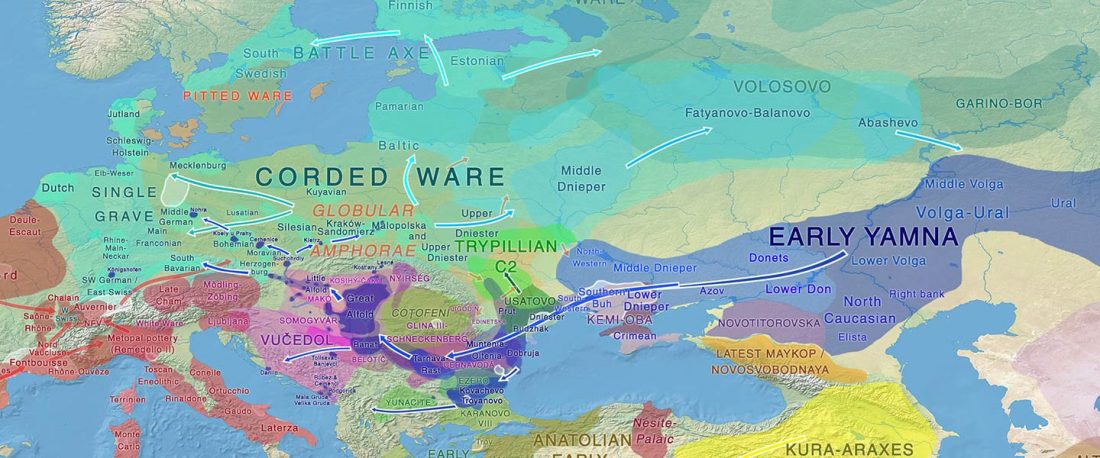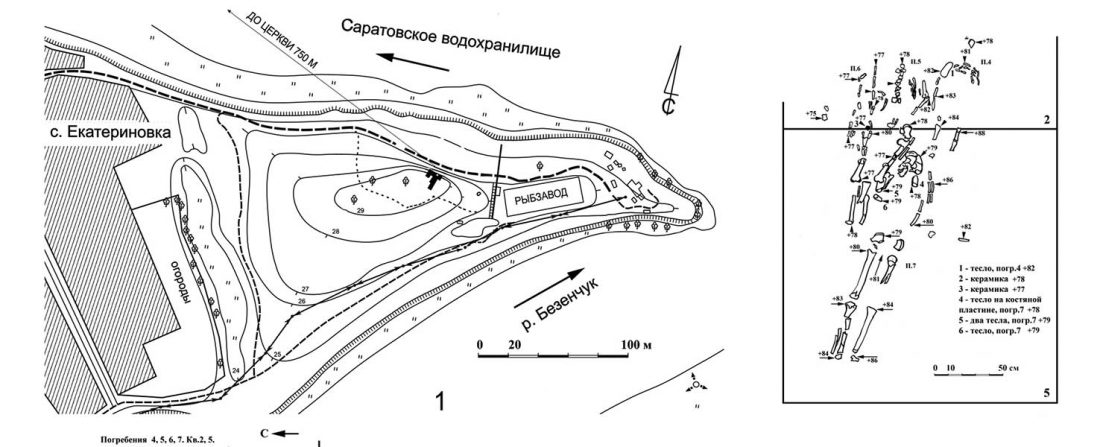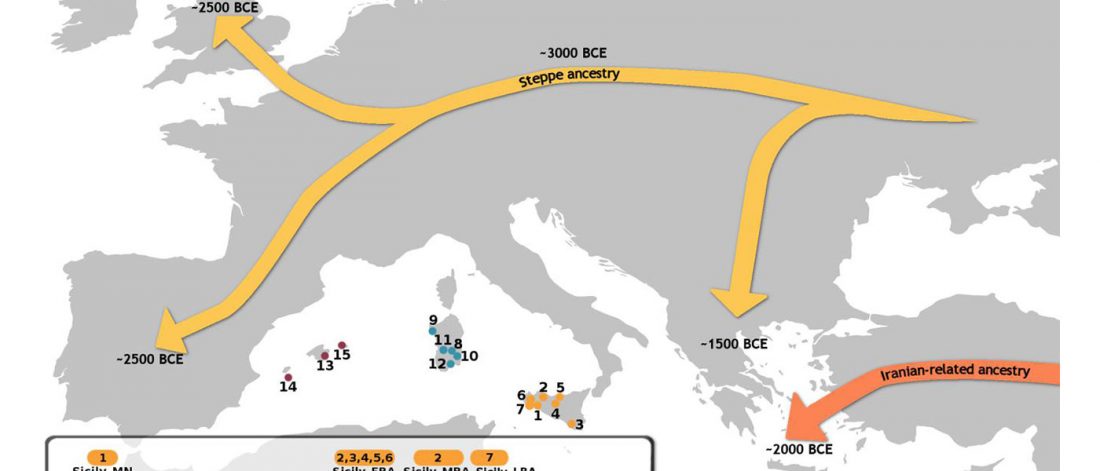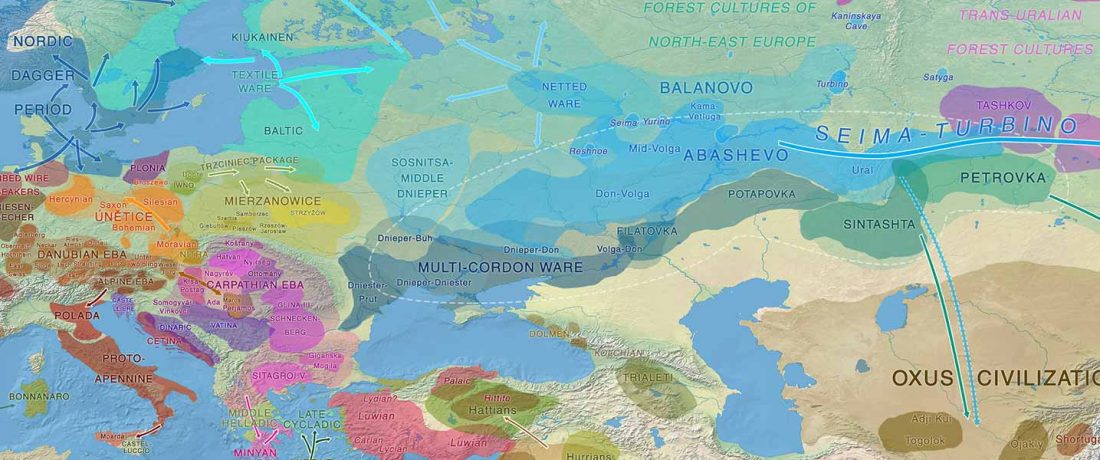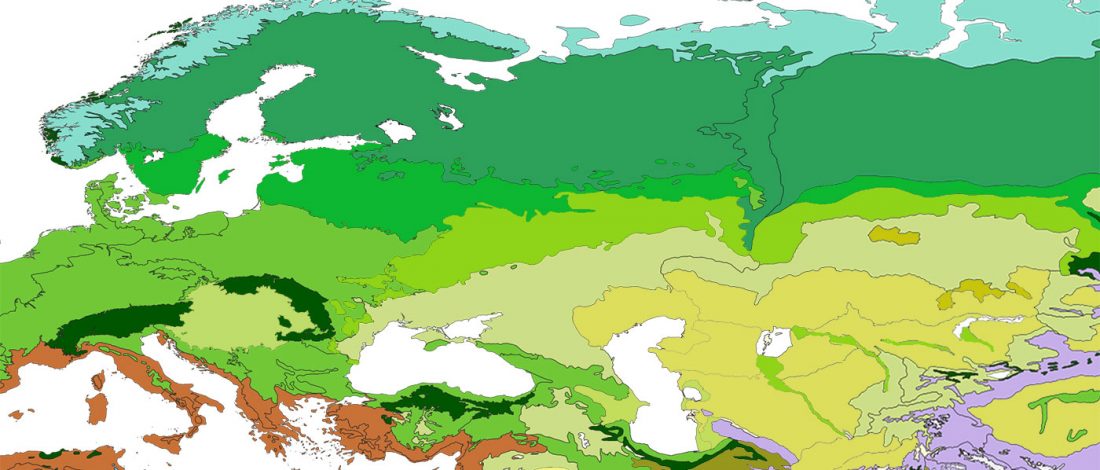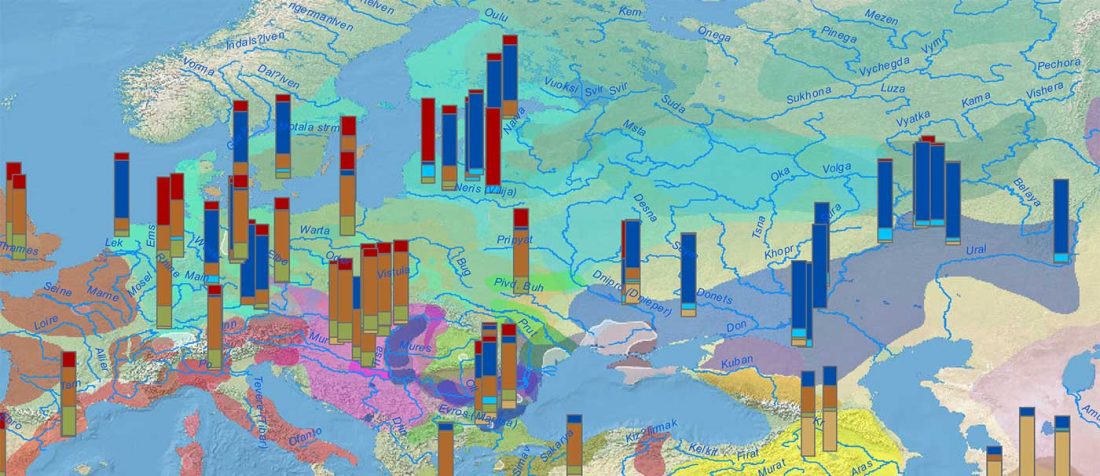I said I would write a post about topo-hydronymy in Europe and Iberia based on the most recent research, but it seems we can still enjoy some more discussions about the famous Vasconic Beakers, by people longing for days of yore. I don’t want to spoil that fun with actual linguistic data (which I already summarized) so let’s review in the meantime one of the main Uralic-Indo-European interaction zones: Scandinavia.
Seal hunting
One of the many eye-catching interpretations – and one of the few interesting ones – that could be found in the relatively recent article Talking … Read the rest “Pre-Germanic and Pre-Balto-Finnic shared vocabulary from Pitted Ware seal hunters”
Two important papers have appeared regarding the supposed link of Uralians with haplogroup N.
Avars of haplogroup N1c-Tat
Preprint Genetic insights into the social organisation of the Avar period elite in the 7th century AD Carpathian Basin, by Csáky et al. bioRxiv (2019).
Interesting excerpts (emphasis mine):
After 568 AD the Avars settled in the Carpathian Basin and founded the Avar Qaganate that was an important power in Central Europe until the 9th century. Part of the Avar society was probably of Asian origin, however the localisation of their homeland is hampered by the scarcity of historical and archaeological
…
Read the rest “R1a-Z280 and R1a-Z93 shared by ancient Finno-Ugric populations; N1c-Tat expanded with Micro-Altaic”
After some really interesting fantasy full of arrows, it seems Kristiansen & friends are coming back to their most original idea from 2015, now in New Scientist’s recent clickbait Story of most murderous people of all time revealed in ancient DNA (2019):
Teams led by David Reich at Harvard Medical School and Eske Willerslev at the University of Copenhagen in Denmark announced, independently, that occupants of Corded Ware graves in Germany could trace about three-quarters of their genetic ancestry to the Yamnaya. It seemed that Corded Ware people weren’t simply copying the Yamnaya; to a large degree they
…
Read the rest “How the genocidal Yamnaya men loved to switch cultures”
We already had conflicting information about the elite individual from the Yekaterinovsky Cape and the materials of his grave, which seemed quite old:
For the burial of 45 in the laboratory of the University of Pennsylvania, a 14C date was obtained: PSUAMS-2880 (Sample ID 16068)30 kDa gelatin Russia. 12, Ekaterinovka Grave 45 14C age (BP) 6325 ± 25 δ 13C (‰) –23.6 δ15 N (‰) 14.5. The results of dating suggest chronological proximity with typologically close materials from Yasinovatsky and Nikolsky burial grounds (Telegini et al. 2001: 126). The date obtained also precedes the existing dates
…
Read the rest “Yekaterinovsky Cape, a link between the Samara culture and early Khvalynsk”
New preprint The Arrival of Steppe and Iranian Related Ancestry in the Islands of the Western Mediterranean by Fernandes, Mittnik, Olalde et al. bioRxiv (2019)
Interesting excerpts (emphasis in bold; modified for clarity):
Balearic Islands: The expansion of Iberian speakers
Mallorca_EBA dates to the earliest period of permanent occupation of the islands at around 2400 BCE. We parsimoniously modeled Mallorca_EBA as deriving 36.9 ± 4.2% of her ancestry from a source related to Yamnaya_Samara; (…). We next used qpAdm to identify “proximal” sources for Mallorca_EBA’s ancestry that are more closely related to this individual in space and time, and found
…
Read the rest “Arrival of steppe ancestry with R1b-P312 in the Mediterranean: Balearic Islands, Sicily, and Iron Age Sardinia”
The final paper on Indo-Iranian peoples, by Narasimhan and Patterson (see preprint), is soon to be published, according to the first author’s Twitter account.
One of the interesting details of the development of Bronze Age Iberian ethnolinguistic landscape was the making of Proto-Iberian and Proto-Basque communities, which we already knew were going to show R1b-P312 lineages, a haplogroup clearly associated during the Bell Beaker period with expanding North-West Indo-Europeans:
From the Bronze Age (~2200–900 BCE), we increase the available dataset from 7 to 60 individuals and show how ancestry from the Pontic-Caspian steppe (Steppe ancestry) appeared throughout Iberia
…
Read the rest “Aquitanians and Iberians of haplogroup R1b are exactly like Indo-Iranians and Balto-Slavs of haplogroup R1a”
This is a post I wrote in November 2018 to answer the absurd theories that had been published in the past 3 years. I decided not to publish it then, seeing how many “R1a/CWC=IE”-fans were at risk of having a stroke due to the most recent developments in population genomics. Now, in february 2019, it seems like the right time of general relax after some drought in genetic papers (and some more “steppe ancestry=IE” inventions) to publish it with some funny additions. For those of you interested in DNA “calculators” and similar tools like Eurogenes, you should read this before … Read the rest “The “Indo-European Corded Ware theory” doesn’t hold water”
We know that the Caucasus Mountains formed a persistent prehistoric barrier to cultural and population movements. Nevertheless, an even more persistent frontier to population movements in Europe, especially since the Neolithic, is the Pontic-Caspian steppe – forest-steppe ecotone.
Like the Caucasus, this barrier could certainly be crossed, and peoples and cultures could permeate in both directions, but there have been no massive migrations through it. The main connection between both regions (steppe vs. forest-steppe/forest zone) was probably through its eastern part, through the Samara region in the Middle Volga.
The chances of population expansions crossing this natural … Read the rest “The genetic and cultural barrier of the Pontic-Caspian steppe – forest-steppe ecotone”
This is mainly a reread of from Book Two: A Game of Clans of the series A Song of Sheep and Horses: chapters iii.5. Early Indo-Europeans and Uralians, iv.3. Early Uralians, v.6. Late Uralians and vi.3. Disintegrating Uralians.
“Sredni Stog”
While the true source of R1a-M417 – the main haplogroup eventually associated with Corded Ware, and thus Uralic speakers – is still not known with precision, due to the lack of R1a-M198 in ancient samples, we already know that the Pontic-Caspian steppes were probably not it.
We have many samples from the north Pontic area since … Read the rest “ASoSaH Reread (II): Y-DNA haplogroups among Uralians (apart from R1a-M417)”


